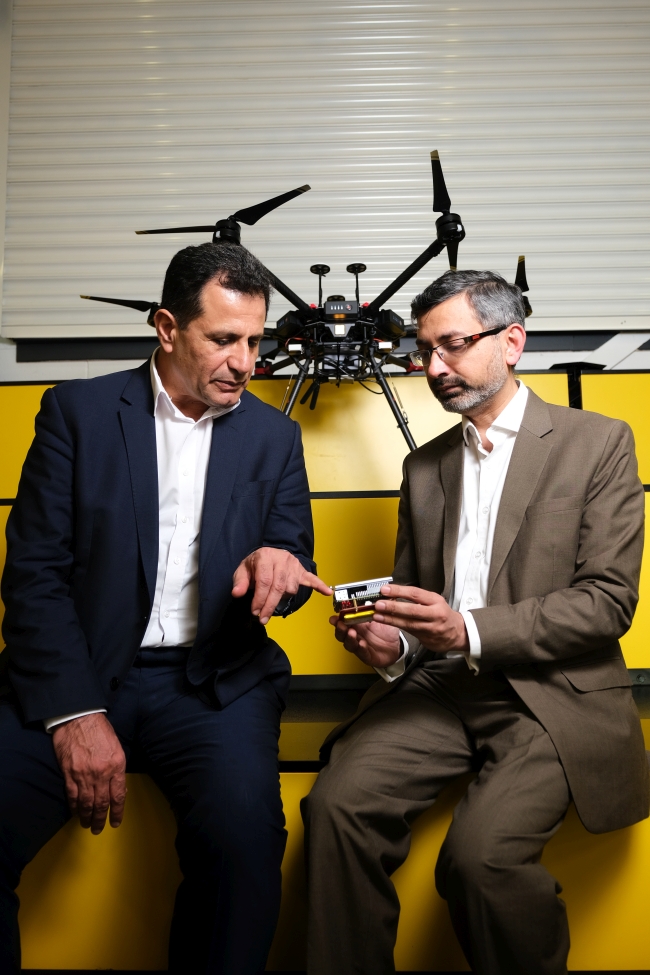Disaster relief project dares to think differently with drones
Published: 12 March 2020
A project which aims to use drones to ensure that mobile communications remain accessible in disaster zones has had its first successful demonstration.
A project which aims to use drones to ensure that mobile communications remain accessible in disaster zones has had its first successful demonstration.
The Distributed Autonomous and Resilient Emergency Management System (or DARE) project took to the skies in the University of Glasgow’s Stevenson Building.
Over the last three years, the DARE research team has developed a system of portable, battery-powered communications nodes which use ultra-fast 5G networking to communicate with airborne drones to deliver wireless internet access to users on the ground. Once set up, the system runs autonomously, self-organising to deal with potential network and coverage problems and deliver reliable, high-speed internet access.
Ultimately, the researchers hope the technology will be available to first responders on the scene of terrorist attacks or natural disasters like earthquakes or tsunamis.
Communications towers are frequently damaged during large-scale emergencies, making it much more difficult for first aid teams and police and fire services to stay in touch with their bases and each other.
The technology could also be used to ensure access to communications in less critical circumstances, like large-scale concerts, where traditional networks often struggle to cope with providing service to every attendee.
DARE is led by the principal investigator Regius Professor Rahim Tafazolli from the University of Surrey in collaboration with the Universities of Glasgow, Kingston and Malaya. Work on the project began in May 2017, with £1.2m in support from the Engineering and Physical Sciences Research Council’s Global Research Challenge Fund.
The demonstration was attended by representatives from each of the partner universities, including the Director of University of Surrey’s 5G Innovation Centre Regius Professor Rahim Tafazolli. They watched as the team set up five network nodes around 200 metres apart which delivered a continuous 5G network signal to users via the drone.
Professor Muhammad Imran, Head of Communications, Sensing and Imaging research group at the University of Glasgow’s in James Watt School of Engineering, who is one of the founding partner of Scotland 5G Centre and also one of the lead principal investigators on the DARE project. He said: “We’re proud to have developed the system that we set out to build together three years ago, and we’re pleased that this demonstration was such a success with our partners.
“The University of Glasgow’s 5G testbed system provides the robust infrastructure that pushes the boundaries of this transformative technology. This project will also feed into the Scotland 5G Centre’s wave 1 projects for 5G use cases.”
Regius Professor Tafazolli said: “This demonstration of the incredible capability of drones to aid disaster relief is another example of the immense benefit of 5G-enabled technologies. We are proud to have led this collaborative project at the University of Surrey; it is testament to the 5G Innovation Centre’s wide-reaching influence on the continuing development of exciting technologies.”
Professor Christos Politis, Director of the Digital Information Research Centre (DIRC) at Kingston University in the School of Computer Science and Mathematics, who is one of the lead principal investigators on the DARE project. He said: “I am extremely proud to see my brain child to grow from an idea to a fully-fledged communication system. It is due to the dedication of our team at Kingston University and collaborative work with our partners that we have successfully achieved this milestone.”
First published: 12 March 2020

